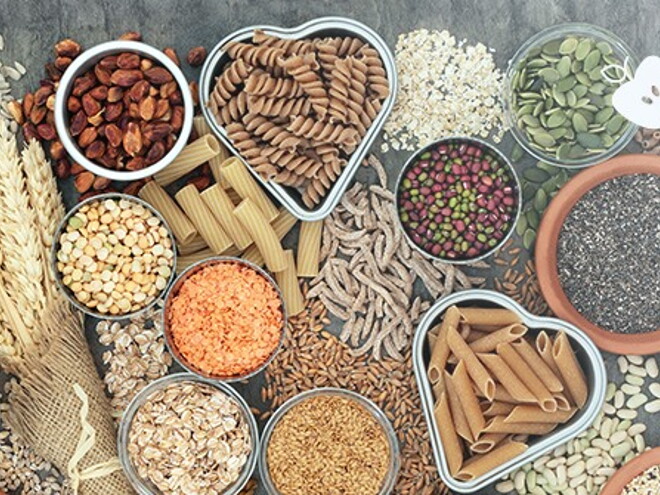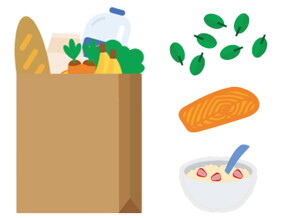
Fibre is an important nutrient for growing bodies because it can aid with digestion and may help prevent constipation. It’s a type of carbohydrate found in plant foods that helps keep things moving through your little one’s gut.
However, some children don’t get enough fibre every day. Recommendations on how much fibre toddlers need vary from country to country. Some guidelines state 10-14g per day is appropriate for one to three-year-olds.
Recent studies have explored the eating patterns of toddlers around the globe. Results show that in China, toddlers (two to three years of age) consume only 4g of fibre a day, while in Russia, those of the same age average 12g in their daily diet. Toddlers in the US (aged one to two) have an average intake of 10g fibre a day, while those in Mexico (aged one to four) reach 13g per day.
The good news is that if your toddler is getting enough fibre in his diet, they’re more likely to be meeting other nutrient and energy needs too. This is because high-fibre foods, such as fruits, vegetables, and whole grains, are nutrient-dense. Water is essential for fibre to pass through the body, so don’t forget to offer it to your toddler at every eating occasion.
Whole grains: the whole story
Contrary to what some people think, whole grains and fibre are not the same thing. Foods made from whole grains contain 100% of the original grain—the bran, germ, and endosperm.
Whole grains are a healthy choice because they contain a rich balance of nutrients, including fibre, that is not lost in the food manufacturing process. Refined grains, on the other hand, may have fibre, iron, vitamins, or other nutrients stripped out by processing.
Many countries around the world are recommending more whole grains in the diets of both adults and children, with some health authorities advising that half the grains we eat should be whole grains.
Family goals
It’s not just children who may be missing out. Lots of adults fall short in their consumption of foods rich in fibre and whole grains. Lead by example and let your little one see you making healthy choices when you eat. Chances are they’ll want to copy you, then you can both enjoy the health benefits of a diet rich in fibre and whole grains.
References:
Bailey RL, Catellier DJ, Jun S, et al. Total usual nutrient intakes of US children (under 48 months): Findings form the Feeding Infants and Toddlers Study (FITS) 2016. J Nutr 2018; 148(9S):1557S-1566S. doi: https://doi.org/10.1093/jn/nxy042.
Duyff, RL (2017). Academy of Nutrition and Dietetics. Complete food and nutrition guide (5th ed.). Boston, MA: Houghton Mifflin Harcourt.
Nutrition Position Paper Dietary fibres in baby food 2011.(internal)
Piernas C, Miles DR, Deming DM, et al. Estimating usual intakes mainly affects the micronutrient distribution among infants, toddlers and preschoolers from the 2012 Mexican National Health and Nutrition Survey. Public Health Nutr 2016; 19(6):1017-26.
Reidy KC and Squatrito C. Programming long-term health: Nutrition and diet in toddlers. In: Early nutrition and long-term health, mechanisms, consequences and opportunities. Ed., Saavedra and Dattilo, Elsevier, 2017: 537-60.
Russia – Toddlers feeding practice in Russia (summary slides from publication), March 2018 (not for distribution)
United States Department of Agriculture Food and Nutrition Service. 2016 Child and Adult Care Food Program: Meal Pattern Revisions Related to the Healthy, Hunger-Free Kids Act of 2010. http://federalregister.gov/a/2016-09412
USDA database https://ndb.nal.usda.gov (Accessed December 5 2018)
www.choosemyplate.gov (Accessed December 5 2018)
https://wholegrainscouncil.org/definition-whole-grain (Accessed December 5 2018)
https://www.healthychildren.org/English/healthy-living/nutrition/Pages/… (Accessed December 5 2018)





















